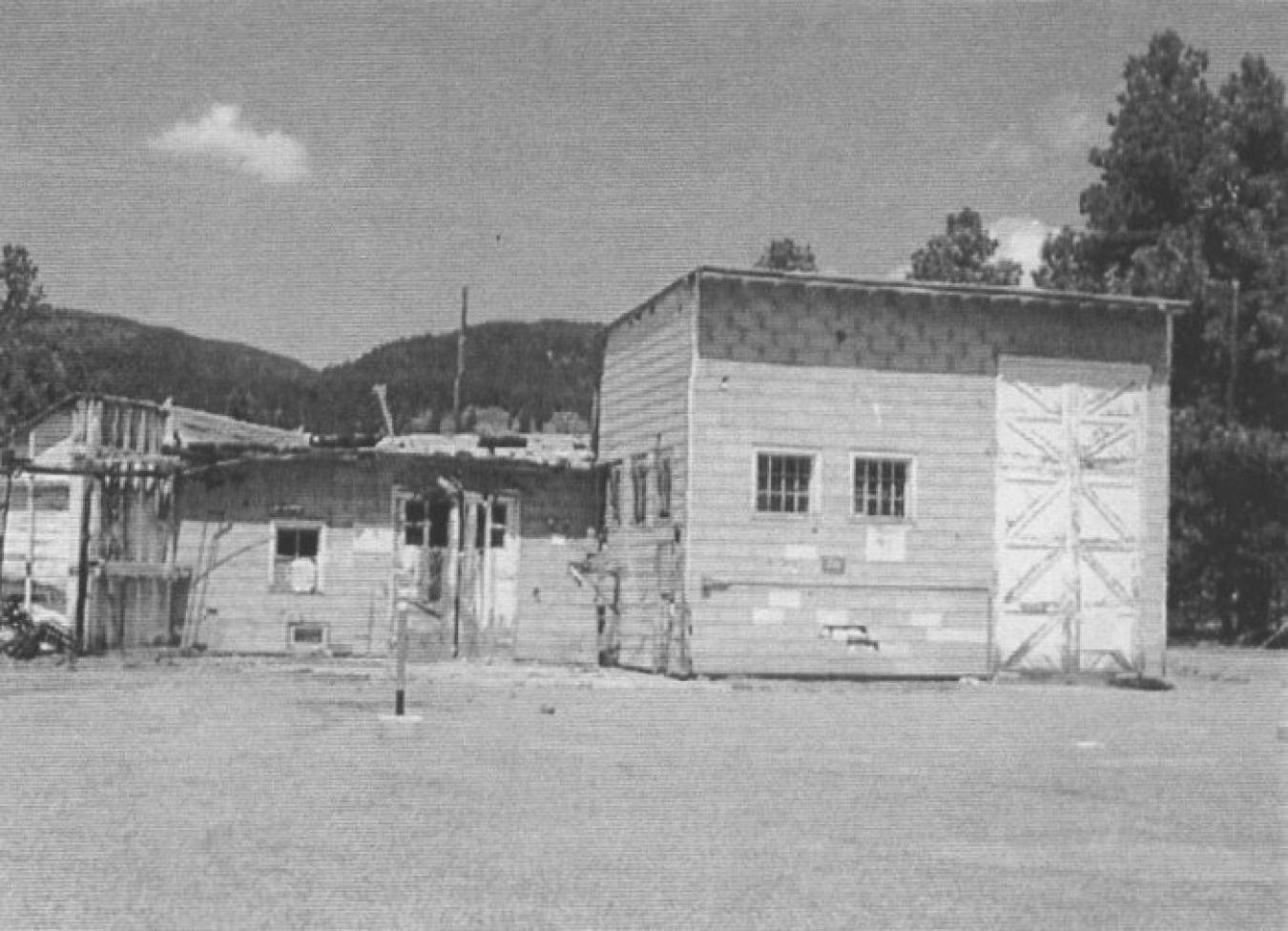
The V-Site buildings and the nearby Gun Site are the last significant structures still standing at the Los Alamos, New Mexico, site associated with the development and assembly of the world's first nuclear devices. Located away from the main laboratory for safety and security reasons, the V-Site consisted of a cluster of wooden buildings built in January 1944 as a high explosives-handling and assembly facility. V-Site was one of the most secretive areas in the Manhattan Project, as it was here that all elements of the project finally came together. Few records exist to document activities at the site. Photographs were prohibited, and the area was hidden behind a "no-peek" fence. "The Gadget," which became the prototype for the "Fat Man" bomb, was an implosion device. Detonation was achieved when symmetrical lenses directed pressure inward to compress a plutonium core.
At Gun Site, scientists performed ballistic tests for the so-called gun method, which brought two subcritical masses of fissionable material together at high speed to form a supercritical mass. This was done using conventional artillery technology to fire one subcritical mass into the other. From the safety of a Gun Site structure built into the hillside, scientists observed the results of the tests through a periscope. The gun method was used for the uranium-235 bomb that was dropped on Hiroshima.
The U.S. Department of Energy was awarded a grant through the federal Save America's Treasures Program by the National Park Service to stabilize and restore V-Site and Gun Site as the interpretive centerpieces for public understanding of the laboratory's role during the Manhattan Project. The May 2000 Cerro Grande fire severely damaged all of the V-Site structures, except for the High Bay building, where scientists assembled the Gadget for the Trinity test.

